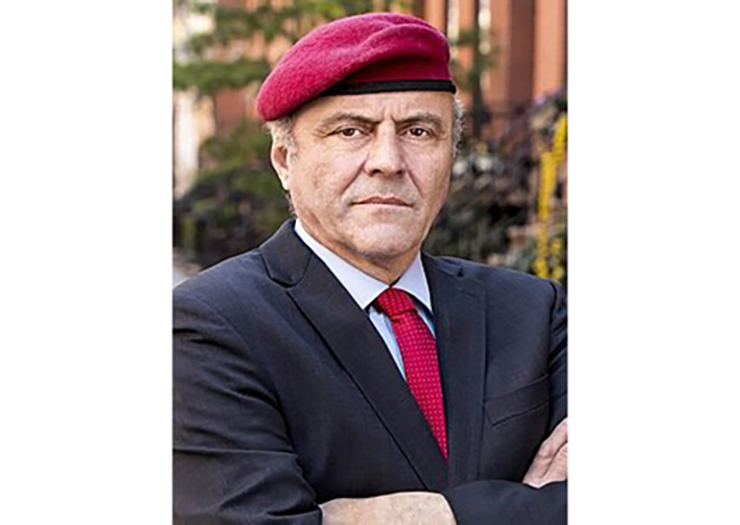As I took my last bite of entrecote steak at a wedding smorgasbord, the question I had pondered earlier in the day became a reality: What if a siren blared during the festivities? Moments later, it did. The siren’s familiar, foreboding sound echoed. It wasn’t that it came as a surprise. We have been hearing sirens almost daily. It wasn’t a question of if, but when.
With the badeken about to begin, most guests had already moved into the next room. On one side of the m’chitzah, the chasan sat at his tish; on the other, the kallah sat in her chair. The hall staff quickly instructed those of us still in the anteroom to enter the large hall and stand by the wall. While the wall wasn’t a safe room, it was our best option. When I entered the next room, I expected to see all the guests heading toward the walls, but instead, I encountered a completely different reality.
In the big room, the siren wasn’t audible at all. Aside from the few of us who had trickled in, no one knew what was happening. Everything continued as planned. Lively singing and dancing accompanied the chasan to the badeken. Neither the chasan, the kallah, nor the guests had any idea. Baruch Hashem, everything was okay.
The contrast between happy celebrations and underlying fear reflects a broader reality: While people try to live their lives as normally as possible, we never forget that we are still at war. Many people continue to suffer. Attempts to help those affected by the war could be seen throughout the Purim holiday.
A heartwarming video taken on Rosh Chodesh Adar went viral when dozens of yeshivah boys davened Hallel with patients and medical personnel filling the lobby of the Sheba Medical Center at Tel HaShomer, where many soldiers are recovering. Many brought their instruments to accompany the lively singing and dancing. There were flutes, guitars, trombones, clarinets, saxophones, darbukas, and more. The simchah of Adar was palpable. Community spirit shone brighter than fear.
In addition to Rosh Chodesh celebrations, in preparation for the holiday itself, the Military Rabbinate and IDF Logistics Division distributed kosher Megillah scrolls and tens of thousands of printed Megillos to approximately 2,000 locations. This year, the Megillah was read in unusual venues including Gaza, Lebanon, and Syria. The army also distributed approximately 5,000 packages of mishloach manos and hundreds of thousands of hamantashen. Even those in the field could experience the holiday together with the rest of the country.
For some, the Adar celebrations can be challenging. For better and for worse (worse), the sounds of fireworks and explosives can usually be heard in Israel in the weeks leading up to Purim. However, loud noises can be harmful to those who are traumatized. This year, a campaign encouraged people to refrain from using firecrackers, as this could cause great distress to soldiers and survivors of the October 7 Massacre. To protect those with PTSD, some stores and retail chains chose not to sell firecrackers at all this year. It was a simple but powerful choice, one that acknowledged invisible wounds and gave space for healing.
Too many families suffered terrible losses over the last year and a half, taking away from their simchah of Purim. Thousands of mishloach manos packages were delivered to bereaved families throughout the country by schools, youth organizations, charities, and even the police. In an especially touching initiative, the mishloach manos delivered by Chabad to the bereaved included a glass cup that was personalized for each family. The motto of their relative who had fallen in the war and his unique qualities were engraved on the cup. One family received a cup with the words, “to see the light in every situation.” Another one said, “a symbol of boundless giving.” Another said, “devotion to am Yisrael.” Each cup could offer comfort and inspiration long after the holiday ended.
In a world of sirens and uncertainty, it is the quiet, ordinary moments of connection that remind us of who we are and what we stand for. Just this evening (Monday), a siren sent us into our safe rooms, and shrapnel fell in five locations across the Beit Shemesh and Ramat Beit Shemesh area. Yet, moments after we were able to leave, I went out for a walk. People were out – walking, chatting, living. Life goes on. Just as in the story of Purim, when danger loomed but we were saved, we hold onto hope that in these frightening times, we, too, will soon merit to see the G’ulah.
Please continue to daven for the recovery of the wounded, the release of the remaining hostages, and the success and safe return of all soldiers and security personnel.
Suzie Steinberg, (nee Schapiro), CSW, is a native of Kew Gardens Hills and resident of Ramat Beit Shemesh who publishes articles regularly in various newspapers and magazines about life in general, and about life in Israel in particular. Her recently published children’s book titled Hashem is Always With Me can be purchased in local Judaica stores as well as online. Suzie can be reached at This email address is being protected from spambots. You need JavaScript enabled to view it. and would love to hear from you.















